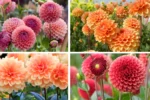Join on WhatsApp
Get the latest updates directly on WhatsApp – motivation, news & more!
If you are looking for a soft, vibrant, and carpet-like indoor plant, the Baby Tears plant (Soleirolia soleirolii) is one of the best choices. Known for its tiny round leaves that spread beautifully, this plant creates a green mat that brightens up any space. Learning how to grow and care for Baby Tears is essential if you want to keep its lush appearance for years. Whether you want to keep it in a pot, hanging basket, or use it as ground cover indoors, this delicate plant rewards proper care with stunning growth.

Understanding the Baby Tears Plant Before You Grow and Care for It
Before you start to grow and care for Baby Tears, it’s important to know a little about the plant itself. Baby Tears, also called Angel’s Tears or Irish Moss (though it’s not a moss), is native to the Mediterranean region. It thrives in warm, humid environments and is loved for its cascading nature. The plant is fast-growing and can be trained to cover soil in pots or spill over containers. Because of its compact leaves, Baby Tears also make a wonderful companion plant, hiding the bare soil around larger indoor plants.
Best Conditions to Grow and Care for Baby Tears Indoors
To successfully grow and care for Baby Tears, you must recreate the conditions it enjoys in nature. This plant loves indirect but bright light. Too much direct sunlight will scorch its delicate foliage, while too little light will make it thin and leggy. A north or east-facing window is ideal.
Temperature is another important factor. Baby Tears prefer mild temperatures ranging between 15°C to 24°C (59°F to 75°F). They don’t do well in extreme cold or hot drafts. Maintaining a stable indoor environment will help the plant stay healthy.
Humidity plays a big role in its survival. Since Baby Tears thrive in moisture, misting the plant regularly or placing it near a humidifier can prevent dry, crispy leaves.
Soil and Potting Mix to Grow and Care for Baby Tears
The right soil is crucial when you want to grow and care for Baby Tears indoors. These plants prefer loose, well-draining soil that retains some moisture but doesn’t stay soggy. A mixture of peat moss, perlite, and regular potting soil works best.
Baby Tears have shallow roots, so they don’t need very deep pots. However, choosing a pot with proper drainage holes is important to prevent root rot. Terracotta pots are often recommended since they allow moisture to evaporate more evenly, avoiding excess water buildup.
Repotting may be needed every year if the plant outgrows its container. When you repot, trim off any leggy growth and refresh the soil to maintain nutrients.
Watering Techniques to Grow and Care for Baby Tears
Watering is the most important part of learning how to grow and care for Baby Tears. These plants love consistently moist soil but cannot tolerate waterlogging. The best way to water is to check the top layer of soil – if it feels slightly dry, water immediately.
Bottom watering (placing the pot in a tray of water and letting the soil absorb it) is often considered ideal for Baby Tears. This ensures even moisture without flooding the delicate leaves. Avoid letting the soil dry out completely, as Baby Tears wilt quickly.
During summer, they may need watering every 2–3 days, while in winter, once a week may be enough. Always adjust based on your indoor conditions.
Fertilizing to Grow and Care for Baby Tears Effectively
To encourage healthy and fast growth, you need to feed the plant while you grow and care for Baby Tears. A diluted liquid houseplant fertilizer once every 3–4 weeks during the growing season (spring and summer) works best. Avoid over-fertilizing, as too much can burn the roots.
In winter, when the plant grows more slowly, reduce feeding. Organic fertilizers like compost tea or seaweed extract can also be used if you prefer a natural approach.
Common Problems When You Grow and Care for Baby Tears
Even with proper attention, you may face challenges when you try to grow and care for Baby Tears. Some common issues include:
- Leaf Browning: Usually caused by dry air or underwatering. Increase humidity and water more consistently.
- Yellow Leaves: This may happen due to overwatering or poor drainage. Check the soil and pot condition.
- Leggy Growth: Caused by insufficient light. Move the plant to a brighter location.
- Pests: Aphids and spider mites can sometimes attack Baby Tears. Wiping leaves with neem oil or using insecticidal soap solves the issue.
By observing these signs early, you can correct problems before the plant weakens.
Table: Key Tips to Grow and Care for Baby Tears
| Aspect | How to Grow and Care for Baby Tears |
|---|---|
| Light | Bright, indirect sunlight only |
| Temperature | 15°C – 24°C (59°F – 75°F) |
| Humidity | High; mist often or use humidifier |
| Soil | Loose, well-draining potting mix |
| Watering | Keep soil evenly moist, not soggy |
| Fertilizer | Diluted liquid fertilizer monthly |
| Common Problems | Browning leaves, pests, yellowing |
Propagation Methods to Grow and Care for Baby Tears
Another exciting aspect of learning how to grow and care for Baby Tears is propagation. This plant spreads easily, so you can create more plants without buying new ones.
The most common method is division. Simply separate a clump of the plant from the main pot, making sure it has roots attached, and replant it in fresh soil. Baby Tears are also known to root quickly when their stems touch moist soil, making them excellent for ground cover.
Propagation not only gives you new plants but also keeps the parent plant looking neat and healthy.
Styling Ideas While You Grow and Care for Baby Tears Indoors
Apart from regular care, many plant lovers enjoy styling options while they grow and care for Baby Tears. Because of its cascading growth, this plant looks beautiful in hanging baskets, where its tiny leaves spill down elegantly.
Baby Tears can also be used as a tabletop accent, adding greenery to office desks or living room corners. Terrariums are another popular option because the plant thrives in humid enclosed spaces. When placed in decorative containers, Baby Tears bring a fresh, lush look to any interior design.
Final Thoughts on How to Grow and Care for Baby Tears
The Baby Tears plant is a perfect choice for anyone who loves greenery but wants something unique and delicate. Learning how to grow and care for Baby Tears properly ensures that this beautiful plant stays vibrant and healthy indoors. By giving it bright but indirect light, keeping the soil moist, maintaining humidity, and feeding it occasionally, you can enjoy a lush carpet of green all year round. Whether you grow it in a pot, basket, or terrarium, Baby Tears reward your attention with unmatched charm. With the right balance of care, this plant not only thrives but also transforms your indoor space into a refreshing green haven.


